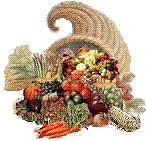
you came from
Food Safety After a Flood
All foods contaminated by flood or other water, have to be treated to be safe.
- Inspect food carefully after a flood. Contamination may occur if filth and disease bacteria in flood waters cover, drip or seep into food.
- Discard all foods packed in foil, cellophane, paper, and cloth or cardboard that has come in contact with floodwaters. Even if the contents seem dry, they may not be safe.
- Discard all flooded meats, fish poultry, fresh fruits and vegetables as well as foods packaged in crown-capped bottles, and glass or plastic jars and bottles. Filth from floodwaters can get up under the lip of these lids and contaminate the food. If you are unsure about the condition of the food, throw it away.
- Do not attempt to salvage cans that are bulging or damaged. Throw them away where people or animals can get themó they are not safe.
- Home canned foods that were covered with floodwater are not safe. Throw away the food and sterilize the empty jars and rings. Discard the flat, don't use it again.
- Only food in sealed, airtight metal cans may be entirely safe for use. You must carefully clean and disinfect the cans before opening. Choose one of the two procedures:
Bleach Method
Step 1: Remove labels. Use a permanent marker to re-label each can.
Step 2: Wash the cans in a strong detergent solution with a scrub brush to remove all dirt.
Step 3: Disinfect the cans by immersing them in a solution of 1 tablespoon household unscented laundry bleach in 1 gallon of water for 2 minutes.
Step 4: Rinse in clean, clean, disinfected water.
Step 5: Air dry (towels spread bacteria).
Boiling Method
Step 1: Place cans in already boiling water and boil for 10 minutes. Cans will not blow up in this short time. For this short time period, only the outside of the can will heat up, killing bacteria on the surface. However, it would be dangerous to leave cans in boiling water for a prolonged period of time.
Step 2: Air dry (towels spread bacteria).
